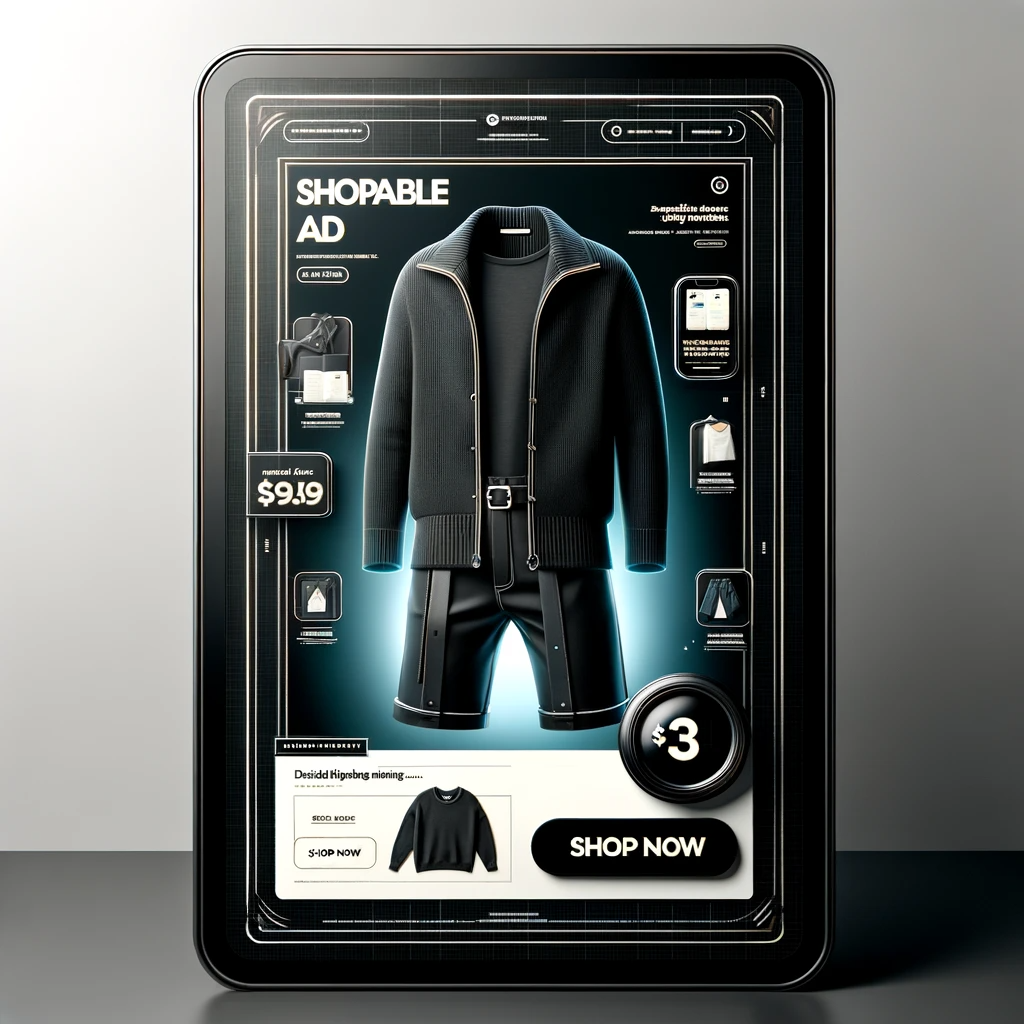This post was updated July 2024.
If your business intends to remain competitive in the crowded online space, you have to adapt your strategies to the latest innovative digital marketing trends — before they become mainstream.
From the immersive realms of the Metaverse and Augmented Reality to the precision of programmatic SEO and hyper-personalization through Big Data, this article will walk you through 23 of the latest digital marketing trends you can’t ignore.
TABLE OF CONTENTS:
23 Digital Marketing Trends You Can’t Ignore
Understanding these marketing trends is critical, not just for staying relevant, but for forging a path of growth and engagement in an increasingly digital world. Let’s dive in and explore the forces shaping the future of digital marketing landscape.
1) Optimizing AI Search Recommendations
Generative AI platforms like ChatGPT and Google Gemini are key digital marketing innovations that have quickly found their utility for hundreds of business categories, from helping people draft emails, organize and tabulate data, and generating ideas, they are the next evolution of productivity.
Gemini is naturally tied to Google’s search engine, meaning that it has dynamic access to Google’s entire index as often as it’s updated, so Gemini can give highly accurate and relevant information no older than a few hours.
When you think of the different ways people are using tools like Gemini to answer their questions, there’s always a likelihood that Gemini will refer to topically authoritative brands that support its response to the user’s prompt.
What this means is that someone could use a prompt that asks Gemini to come up with a list of the best restaurants in their area, and Gemini will generate a list of what it deems to be the most qualifying restaurants for that list:
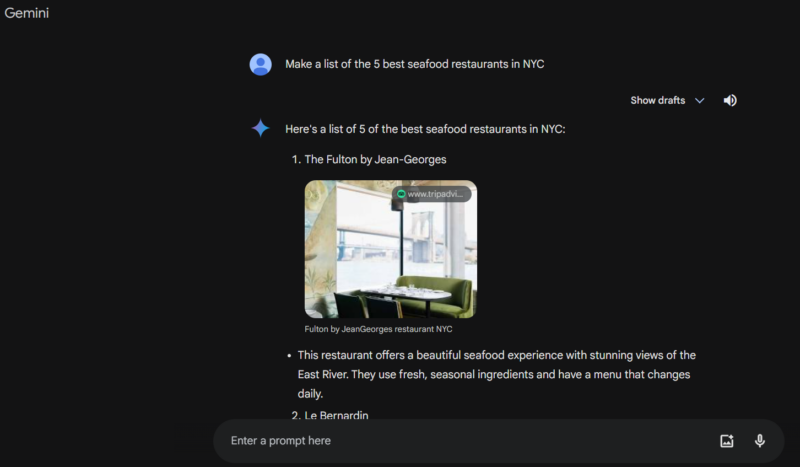
As Google frames it, Gemini is not equivalent to a search engine, but rather it’s “a complement to Google Search.” It essentially takes information from Google and presents in a more conversational way. To many, this is a preferable method to answering a query than traditional search.
Herein lies the opportunity. Marketers ought to optimize their content basically as they would for regular SEO, but also for recommendations by up-to-date language models like Gemini.
There are a few things you can do to increase the chances of Gemini listing your brand in its responses:
- Create quality and useful content for users. This will help to improve your brand’s visibility and authority in Google’s search results, which Gemini uses to generate its responses. Google’s E-E-A-T guidelines are a useful rubric.
- Build a quality backlink profile. Backlinks from other high-quality websites are a signal to Google that your website is authoritative and trustworthy.
- Make sure your website is well-optimized for search engines. This means using relevant keywords in your titles, meta descriptions, and throughout your content.
- Claim and verify your Google Business Profile. A Google Business listing will help ensure that your business information is accurate and up-to-date in Google’s search results and on Google Maps.
- Encourage your customers to leave positive reviews. Reviews are another signal to Google that your business is trustworthy and reputable.
Gemini is trained on a massive dataset of text and code, including a lot of information about brands and businesses. If you can identify the keywords and phrases that Gemini is most likely to use when referring to your brand, you can incorporate those terms into your own content to increase the chances that Gemini refers to your brand.
2) AI Marketing
Starting us off is a subject that could easily fill dozens of articles with strategy and speculation with all the different ways it is evolving. Yes, we’re speaking of AI.
The use of artificial intelligence in digital marketing has never been more prominent than in our current year, and it’s a digital trend that’s only going to get better in the coming years. AI-driven digital marketing campaigns can provide faster and more accurate insights into customer behavior, leading to higher campaign success rates.
AI Marketing Automation
AI can be used to automate mundane tasks such as data collection and analysis, freeing up marketers’ time for more complex activities like creative strategy development. By leveraging the potency of AI-powered marketing automation in digital marketing strategies, businesses can gain a better understanding of their customers and maximize their digital ROI:

AI for Content Creation
Jasper is an example of AI-powered software that is used for content creation. By using this AI writing tool (or others, such as Byword or SurferAI), marketers can quickly generate relevant content – for ad campaigns, email campaigns, blog post writing – without having to manually search for content ideas or create new content from scratch.
With features like automated keyword tracking, trending topics analysis, and personalization capabilities, as well as the ability to create headlines and outlines, Jasper makes content marketing easier than ever before.
AI can also analyze consumer behavior and search patterns, and use data from social media platforms like Instagram and blog posts to help businesses understand how customers find their products and services.
One such company that has made AI the center of its value proposition is Google through its search generative experience (SGE):
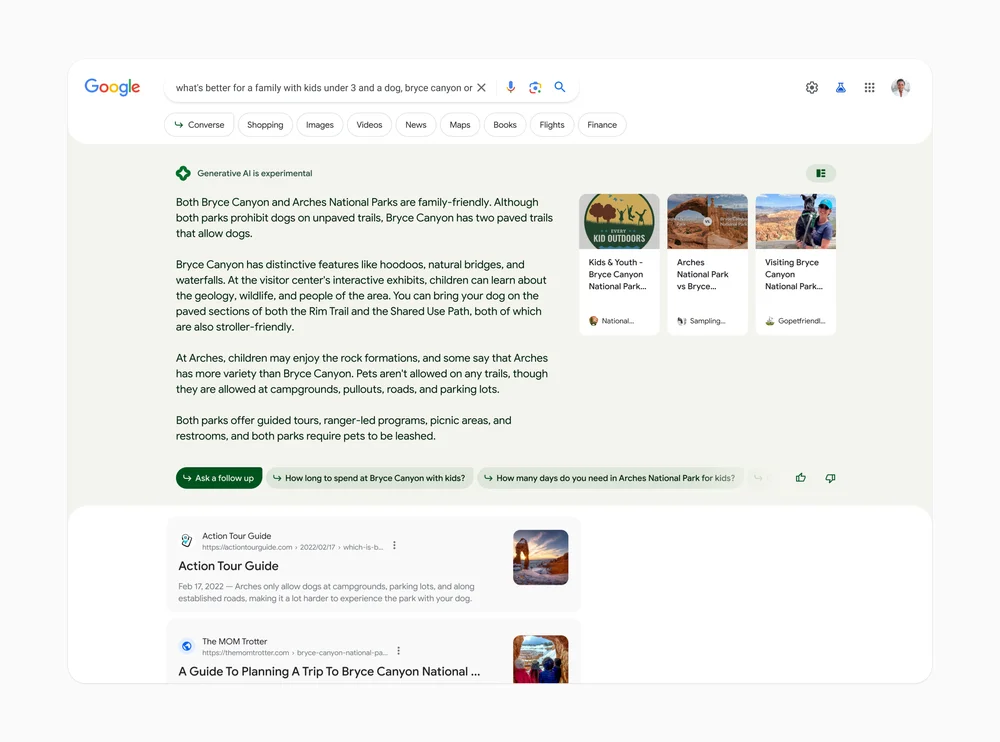
Over the last few years, their implementation of AI has allowed their search engine to understand with higher precision what people are looking for and what kind of content best serves their search intent. Google is getting so good at anticipating users’ intent that it’s now fashioning tailored SERPs with information connected to the user query.
Multimodal AI
Then there’s multimodal AI, which is the culmination of all new developments in the world of AI, working together. Multimodal AI is a type of AI that can process and understand multiple types of data, such as images, text, audio and video.
Multimodal AI models often use vector embeddings to represent the different types of data that they process. For example, an image classification model might use vector embeddings to represent the visual features of an image, such as the shapes, colors and textures of the objects in the image. A text classification model might use vector embeddings to represent the semantic meaning of a piece of text, such as the topics and entities that are mentioned in the text:
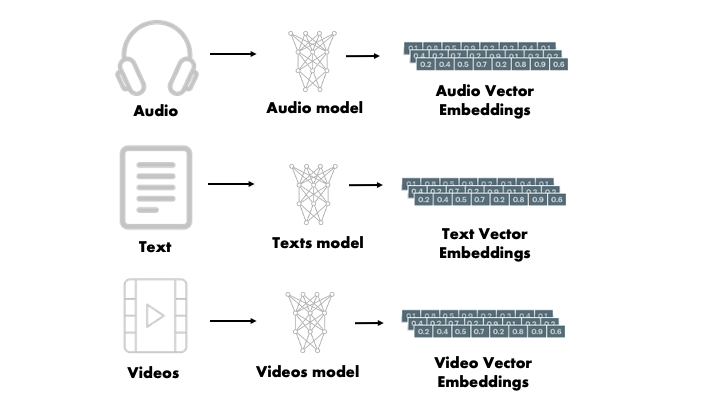
Once the data has been represented in a vector space, the multimodal AI model can use a variety of techniques to learn and reason about the data. For example, the model might learn to identify patterns in the data or to group similar data points together. The model can then use this knowledge to perform tasks such as image classification, text classification or machine translation.
With AI-driven tools, such as chatbots, digital assistants, multimodal AI, and natural language processing (NLP), becoming increasingly sophisticated, artificial intelligence is the way of the future for all things marketing.
Dive Deeper: 10 Easy Ways to Get Started with Marketing AI (Artificial Intelligence)
3) Metaverse Marketing
The current standing of the Metaverse is rather nebulous at this point. The once-promised digital universe where people can interact in immersive three-dimensional, computer-generated environments is not gone, by any means, but the hype has lessened considerably.
It’s really just a case of Mark Zuckerberg building buzz around something that the world wasn’t quite ready to adopt as quickly as he’d hoped. But that isn’t to say it’s dead, per se, it’s just that its pace of user anticipation and adoption has slowed down.
The adoption rate for VR technology continues to grow, but not in the droves that are necessary for the Metaverse to make any meaningful impact for the next few years. The main cause of this is that the technology is still too cost-prohibitive for most people to justify something that is still largely considered recreational, offering little practical utility (for now, that is).
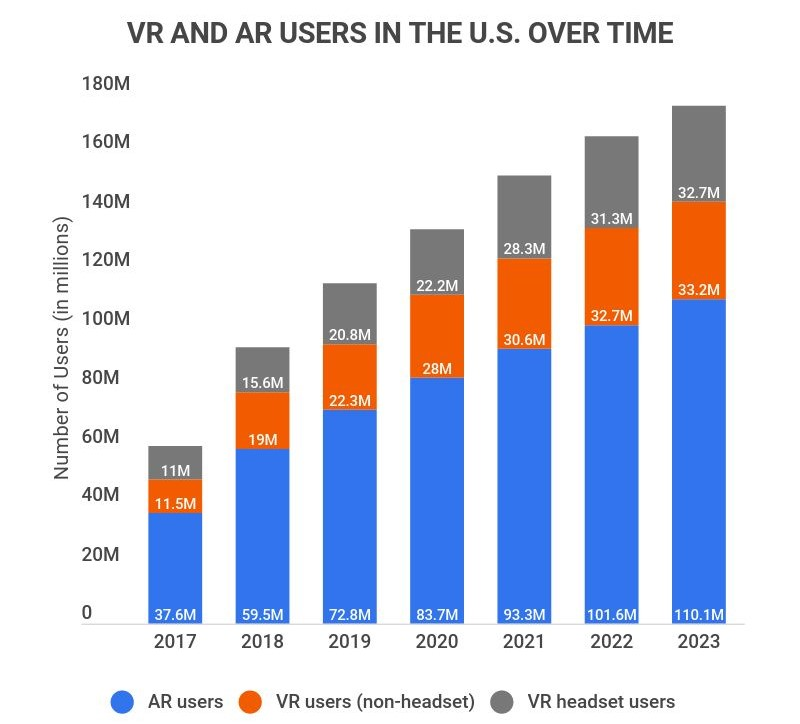
But the metaverse is not a lost cause. Quite the contrary. It still has immense potential for businesses, offering opportunities to reach consumers with more engaging experiences than traditional digital marketing methods can provide.
Here’s a few key stats illustrating the future of digital marketing in the metaverse:
- It is estimated that by 2026 25% of people will be spending an hour daily in the virtual world. That might seem generous now, but a lot can change in just a couple of years’ time.
- By 2026, it is estimated that 30% of companies will be selling in the metaverse.
- 33% of adults are already interested in purchasing digital products in the metaverse.
Metaverse marketing involves the integration of digital and physical spaces via VR and AR to create immersive experiences in which brands sell their products or services. For example, a retailer could use metaverse marketing to create a virtual store where potential customers can browse products as if they’re actually in the store. This way, customers can shop anywhere in the world without having to leave their homes.
Other ways business can make use of metaverse marketing include:
- Immersive Brand Experiences: Businesses can create virtual spaces in the Metaverse where users can interact with their brand in a 3D environment. This immersive experience can range from virtual stores to interactive product demonstrations, providing a unique and engaging way for customers to connect with the brand.
- Customized Virtual Events: Hosting events in the Metaverse, such as product launches, conferences, or networking events, allows businesses to reach a global audience. These events can be customized with interactive features, enabling real-time engagement and a more memorable experience compared to traditional webinars or online meetings.
- Innovative Advertising: The Metaverse offers new advertising formats, such as virtual billboards, branded avatars, or interactive product placements for targeted advertising. These methods can be more engaging than traditional digital ads, capturing the user’s attention in a novel and interactive way.
Metaverse marketing also allows companies to track customer activity and provide personalized experiences for specific customers based on their preferences. Invest the time and resources into it now, so that when the time comes where practically everyone has access to VR technology and can therefore access the metaverse, you won’t be playing catch-up.
Dive Deeper: Best Metaverse Marketing Agency: Top 10 Choices
4) Augmented Reality (AR)
Virtual and augmented reality tend to go hand-in-hand, but they’re definitely not one and the same from a digital marketing angle. Although virtual reality (VR) gets everyone excited with grand sci-fi ideas, augmented reality (AR) has been more realistic for marketers as of late.
Facebook recently launched an improved version of their Meta Smart Glasses, which allows you to play music, take photos and video, and even start a Livestream. These smart glasses, a significant evolution from the first generation in just a couple years, are just the beginning of what could be game-changing AR technology:

Other companies have launched their AR apps, like IKEA. Their IKEA Place app allows users to take a picture of a room in their homes with a smartphone camera (with just iOS 11.0.1 for now) to “test drive” IKEA’s furniture in it. Users can move the furniture around in the app to see how it looks from different angles:
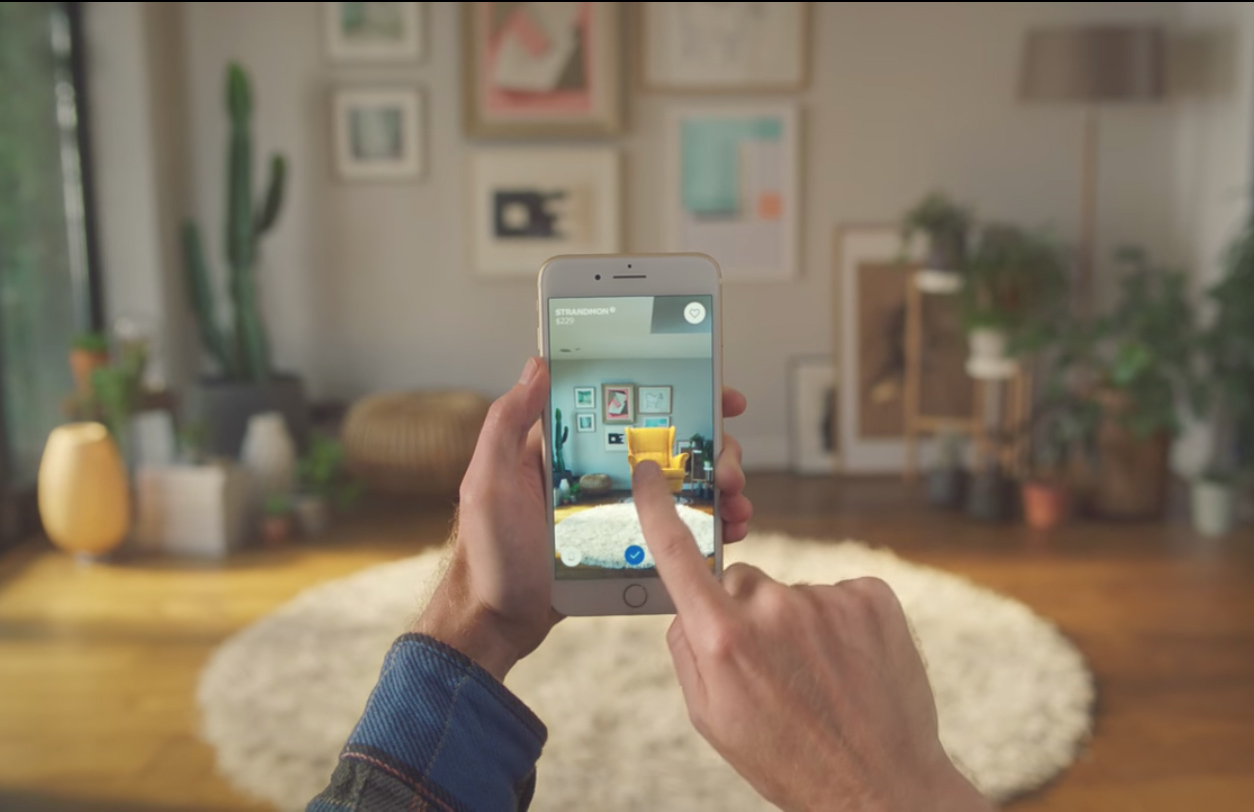
L’Oréal is another brand that is making good use of AR with their Style My Hair app, which allows you to get a makeover or try out various hairstyles without touching a single strand on your head.
You just upload your picture (or use their preloaded image of a model) to see what you look like with different hairstyles or makeup:
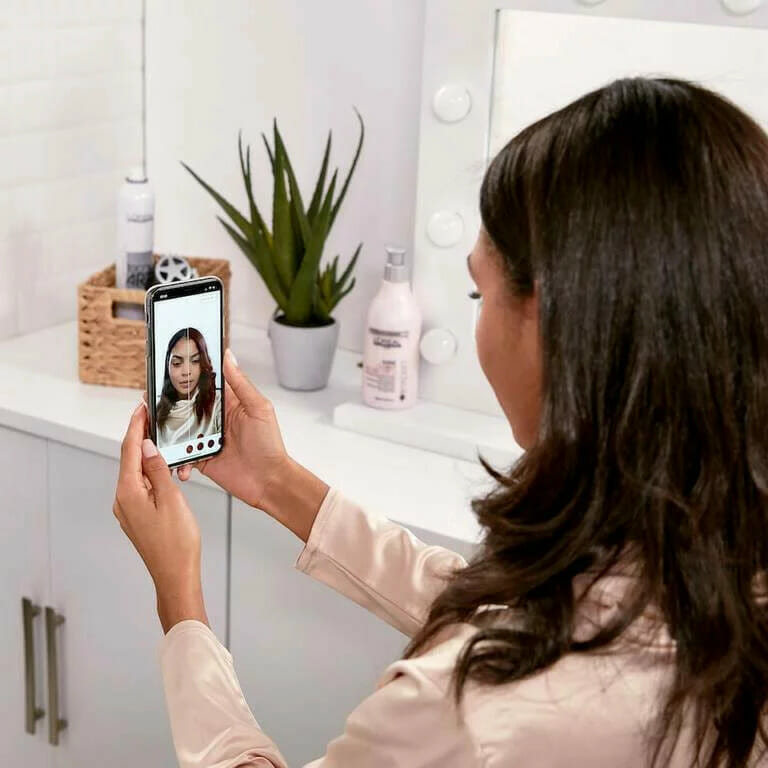
With AR improving rapidly, we will see a huge uptick in brands finding useful applications for the technology in the future.
Related Content: Beginner’s Guide to Virtual Reality Ads
5) Programmatic Advertising
Programmatic advertising is the process of using AI to automate ad buying. By removing humans from this operation, companies receive a more reliable and cost-effective solution to their needs.
Here’s a quick look at how programmatic advertising works:
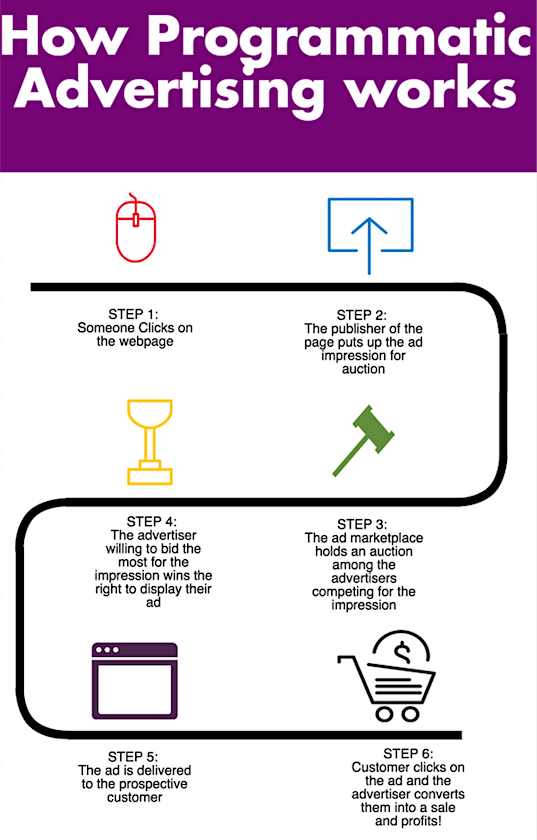
One of the key strengths of programmatic advertising is its ability to operate at a massive scale. Unlike traditional ad buying, which is often manual and limited by human capacity, programmatic advertising can process and analyze vast amounts of data from numerous sources in real-time. This scalability allows for a broader reach, enabling advertisers to target and retarget audiences across multiple platforms and devices efficiently.
According to SmartyAds:
“Most search-driven manual advertising campaigns (even those performed with professional tools) take into account three or four targets: the keyword, time of day, and location. Such tools like programmatic demand-side platforms can use hundreds of targeting signals to individualize the advertisement and even target according to lifestyle or behavior habits when integrated with customer data platforms.”
One popular application of programmatic ad buying you should consider adopting is real-time bidding (aka. RTB), which uses real-time auctions to buy guaranteed ad impressions in advance from specific publisher sites.
If paid media buying, like Google Ads, is a crucial customer acquisition channel for you, you should start paying attention to programmatic advertising.
6) Programmatic SEO
Similar to programmatic advertising, programmatic SEO or “pSEO” is basically the premise of building content at scale, particularly landing pages, with the aid of AI:

The bones of pSEO is in the data that informs it, combined with the instructions you give it. From there, AI writing tools like Jasper or Copy.ai can be leveraged to build SEO-optimized site pages in a fraction of the time it would take to build them normally.
But, as you might be suspecting, this is a double-edged sword.
If you leave all of your new content development up to AI, you might see limited bursts of rankings, but they’re not likely to last long.
Search engines like Google are bound to detect patterns of “content thinness” as is often a byproduct of pure AI output.
To that end, you may achieve a higher density of content, but the depth of that content won’t be sustainable and you’ll be left with pages on your site that have nominal impact (or no impact) on your rankings.
Here are a couple of thoughts on how you can leverage programmatic SEO to it’s fullest potential:
- Start with a small number of pages and gradually scale up your operation as you assess the performance of the new pSEO pages. QA every one of them to make certain that they’re maintaining a good standard of quality.
- Do conversion rate optimization (CRO) programmatically. Since CRO and SEO go hand in hand, you ought to devise a repeatable and reliable method of incorporating CRO elements on these new pages. This could mean writing a script that ensures a specific CRO-related element is always present on the new pages.
7) Conversational Marketing
With all that talk about chatbots, artificial intelligence, and personalization, the reality of modern digital marketing becomes clear: it’s more conversational than ever.
Conversational marketing is a digital marketing tactic that involves creating real-time conversations with prospects or customers to build relationships, increase engagement and even make sales. The aim of conversational marketing is to create unique experiences for each user by providing an interactive experience through chatbots, voice search, SMS and other digital channels.
By leveraging AI technologies such as natural language processing (NLP) to analyze customer intent and provide personalized responses, businesses can offer more engaging interactions while gathering valuable insights into their target audience. This allows them to deliver personalized experiences at scale which can ultimately lead to increased conversions.
Keep in mind: When consumers have a question, 82% want an “immediate” response.
Conversational marketing facilitates a personal, instant connection between marketers and customers:

Unlike traditional strategies, this form of marketing is now available across multiple channels, allowing brands to meet customers on their terms: on the devices, platforms and time schedules that suit the customer best.
The primary goal of conversational marketing is to enhance the user experience through a feedback-driven model that fosters higher engagement, greater loyalty, and more sales.
Some methods companies use to execute a conversational digital marketing strategy include:
- Chatbots
- Personalized videos
- Personalized emails
- Virtual selling assistants
One example of a company that benefited from conversational marketing is ThoughtSpot which, after its implementation, saw 10X more sales conversations, 70% more marketing-qualified leads, and 64% more meetings booked:

Many customers today prefer interacting with chatbots because of their accessibility. They are responsive 24/7, give answers promptly, and accurately recall their entire buying history. These virtual assistants offer outstanding customer service by meeting customers’ expectations and automating repetitive tasks, freeing your resources for more important work.
As more consumers become accustomed to chatbots, they will become increasingly crucial for a positive customer experience.
Dive Deeper: 13 Messages Your Chatbot Should Be Saying to Prospects
8) Hyper-Personalization Through Big Data
If you want to stand out, you need to personalize your marketing, which means personalizing content, products, emails, etc. And what better way to do that than with vast amounts of data?
This short clip from the movie Minority Report may be a bit of an exaggeration (not to mention completely overwhelming), but it shows a world of ongoing personalization:
It turns out that consumers like personalization:
72% of shoppers act on marketing messages only when they are customized to their interests.
Big data plays a critical role in hyper-personalization. When you collect and analyze huge swaths of data from a variety of sources, you can gain a deeper understanding of your customers and identify patterns and trends that would be difficult to see otherwise.
This data can then be used to create personalized experiences across all channels, including email, websites, social media, and in-store.
When you want to study examples of the power of personalization, it’s hard to overlook Netflix and Amazon (two reigning kings of big data), with their incredibly successful recommended products or movie titles.
Cadbury’s created a personalized video campaign that matches a Dairy Milk flavor with users based on data from their Facebook profile, including age, interest and location. The campaign generated a 65% click-through rate and a 33.6% conversion rate, proving that the personal touch works.
Dive Deeper: 3 Ways to Personalize the Customer Journey Experience
9) Zero-Party Data Strategy
Zero-party data is data that customers voluntarily share with brands. It is the most valuable type of data for brands, because it is first-party data that is collected with the customer’s consent:

In the coming year, zero-party data will be essential for brands to provide personalized customer experiences. Here are a few ways that businesses can use zero-party data to improve customer experience:
- It will help personalize product recommendations. Brands can use zero-party data to learn about customers’ preferences and interests, and then use this information to recommend products and services that the customer is most likely to be interested in. This can be done through interactive experiences like polls, quizzes, and preference centers.
- It can create targeted marketing campaigns. Brands can use zero-party data to segment their customer base and create targeted marketing campaigns. This allows brands to send customers messages that are relevant to their interests, which can lead to higher conversion rates.
- It will help provide better customer support. Brands can use zero-party data to learn about customers’ support needs, and then use this information to provide better customer support. For example, brands can use AI-driven interactions with chatbots to answer customer questions and provide support, even outside of normal business hours.
Dive Deeper: 9 Ways to Deliver the Best Digital Experience to Your Customers
10) Account-Based Marketing (ABM)
Account-based marketing is a (typically B2B) marketing strategy that targets specific accounts rather than a broad audience. ABM tailors its messaging and campaigns to specific accounts or customer segments, creating personalized and highly relevant experiences for each account.
This approach involves understanding the specific attributes and needs of an account and then crafting customized strategies to engage decision-makers within that account.
This strategy also allows businesses to save time and resources by focusing on the accounts that are most likely to be successful. The goal of ABM is to foster deeper and more meaningful relationships with high-value accounts, which can lead to higher conversion rates and increased customer loyalty.
With ABM, you have a marketing funnel that looks like this:

Bizible is an example of a company using an ABM approach to connect with their target prospects by sending them a physical care package through the mail.
After identifying who the key decision makers were in their account list, Bizible:
- Created 37 custom care packages which included a physical copy of their Total Economic Impact Bible
- Donated to an environmental charity in their prospect’s name
- Sent them a handwritten card:

Afterward, Bizible followed up with every single one of their prospects to ensure that they received their care package and sent them links to customized landing pages that addressed the decision maker and their business by name.
By using an ABM strategy, Bizible generated over $33,000 in additional revenue and beat their quarterly sales quota by 15%.
11) Video Shorts
Video is one of the most important digital marketing trends today and likely will be for the foreseeable future. Here we’ll touch on both short-form videos and longer, traditional videos.
Videos are 2X as likely to be shared on social media compared to other types of content.
Short-form video can be highly effective and offer significant ROI, due to several factors:
- Short-form videos are concise, easy to consume and can be highly entertaining or informative, which resonates well with social media users.
- Many social media platforms (like TikTok, Instagram Reels, and YouTube Shorts) are prioritizing short-form video content via algorithms that favor these formats.
- Creating short-form videos can be less expensive compared to other forms of content, potentially offering a higher ROI, especially for small businesses or those with limited budgets.
But rather than inundate all these video platforms with your short videos, remember to focus on just 2-3 channels that your audience is using.
You can use video shorts to create:
- Product teasers
- UGC
- Behind-the-scenes videos
- Quick explainer videos
And video advertising is driving engagement like never before:
- The average video has a 2% conversion rate, which is ideal for generating and converting leads.
- Since 84% of people say they bought a product or service after watching a brand’s video, video advertising can result in more conversions.
Its unique ability to combine storytelling with visual and auditory stimuli makes it highly effective in creating memorable and impactful brand messages.
12) Visual Search
Visual search is still a fairly new practice where people can upload an image into a search engine. First you upload a photo:
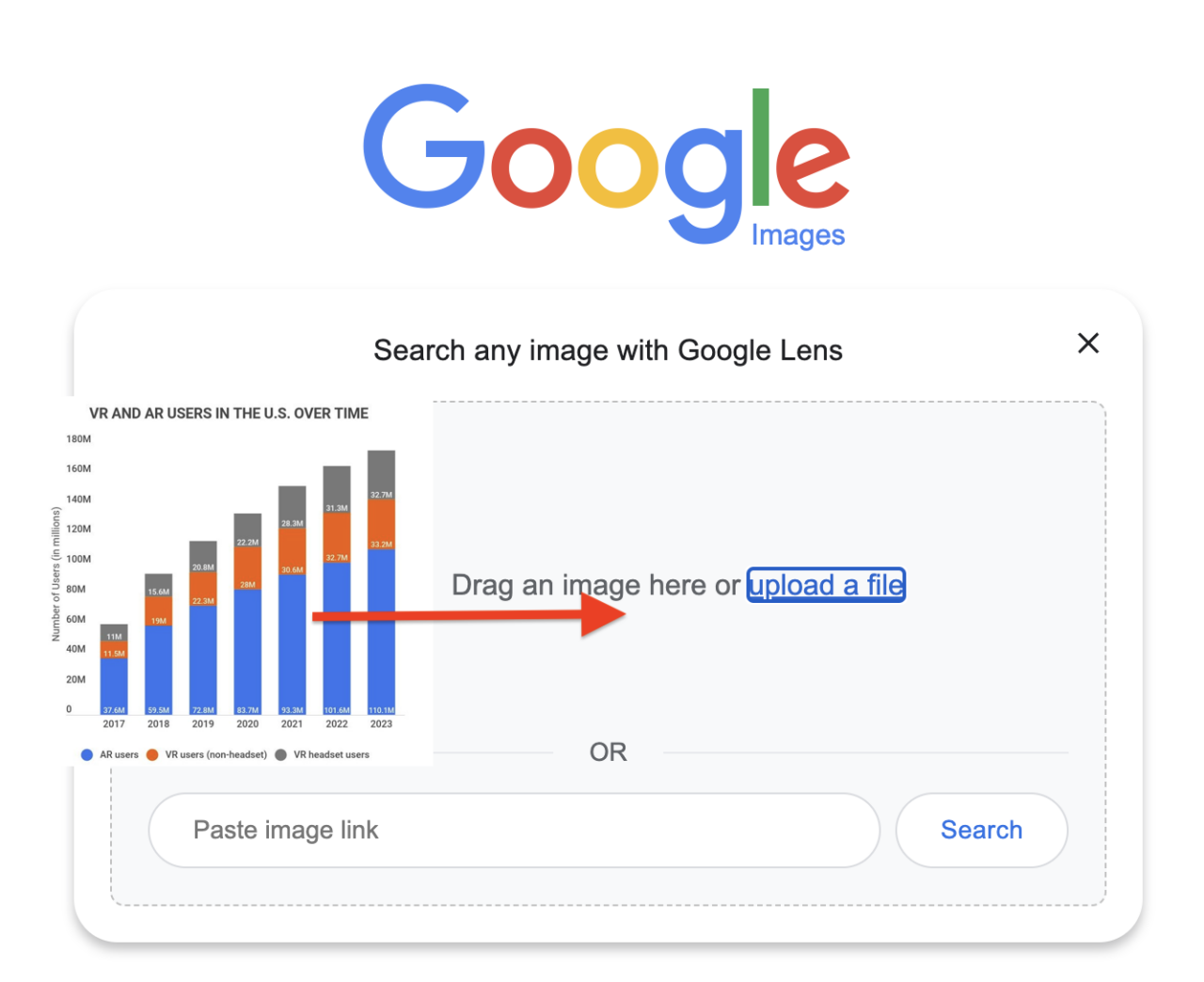
Then up pops all the websites where that image appears so you can get more info about it:
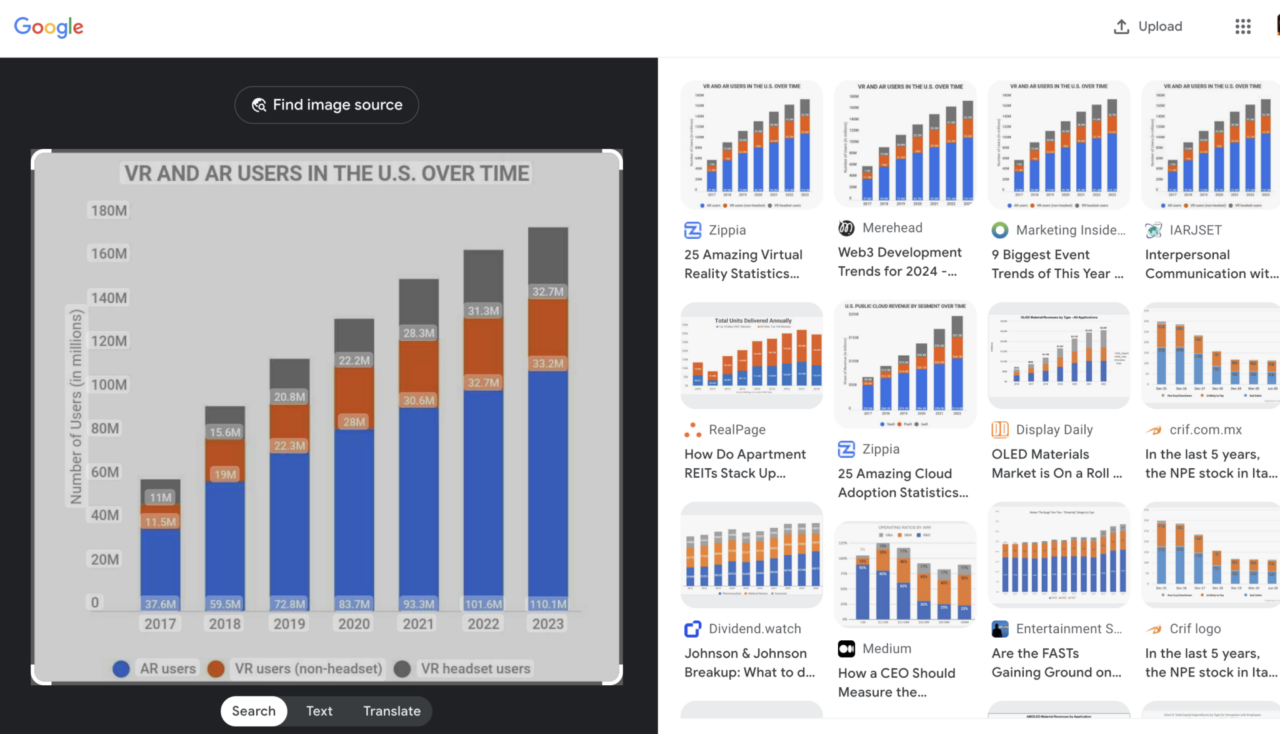
There are two companies that are leveraging visual search:
A) Pinterest
Pinterest jumped on the visual search bandwagon with the launch of Pinterest Lens, a visual search tool that allows users to click on a button in the bottom right corner of the pin to find out where to buy it online, search for similar products, or view pinboards of related items.
It will even pull up all related images and keywords, too, which is perfect for marketers to see which keywords Pinterest is associating your content with:

Pinterest’s Lens recognizes 2.5 billion home and fashion objects and has inspired over 600 million searches on Pinterest’s mobile apps and browser extensions. Since its launch, they have seen a 140% growth in Lens usage.
Pinterest has continued to update its functionality with the launch of the following features:
- Pincodes, which use QR codes to find inspiration while their users are out shopping or flipping through their favorite magazines.
- Collages is a new feature designed to help users personalize ideas and visualize the possibilities by allowing users to cut objects out of a Pin and combine them with other cutouts to create interactive collages of their favorite ideas.

- E-commerce integrations with Salesforce Commerce Cloud and Adobe Commerce which makes it easy for merchants to manage their Pinterest product catalogs and generate growth on Pinterest.
A related item on this digital marketing trends list is Google Lens.
B) Google Lens
Google Lens is a visual search engine by Google, which recognizes objects and landmarks through a camera app: “Not sure how to describe it in words? Use your camera or an image to search.”
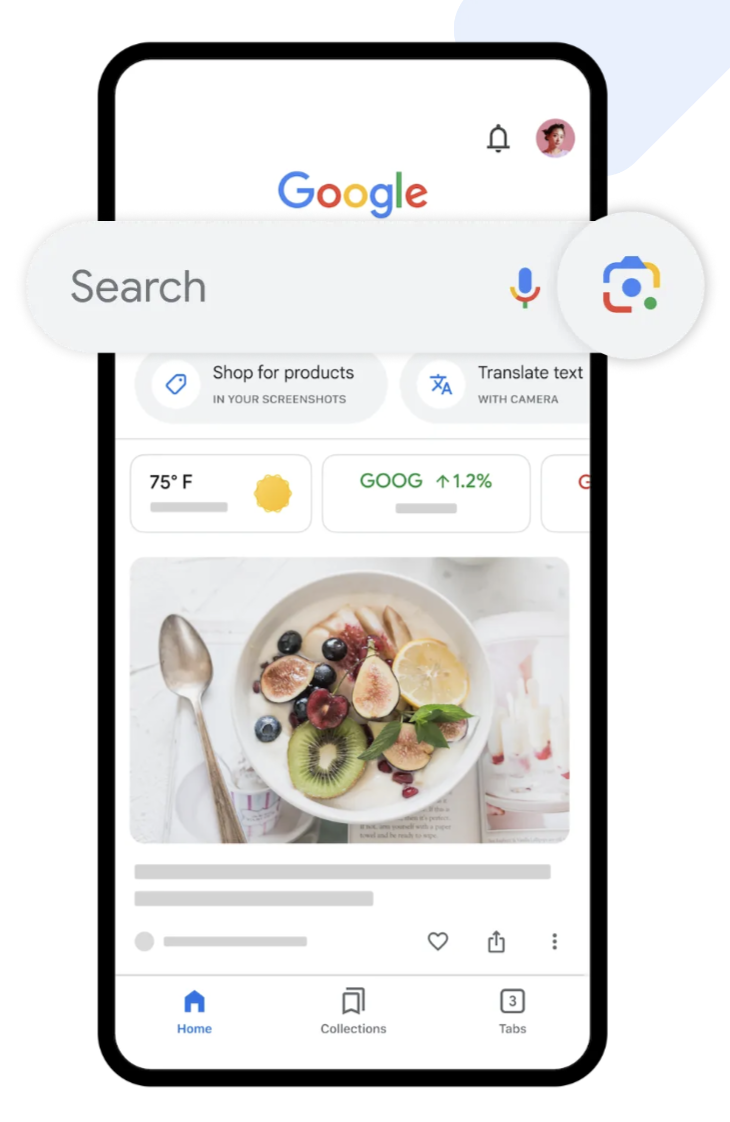
Here’s what you can do when you take a photo of the following items:
- Apparel and home goods: Find similar products and where to buy them.
- Barcodes: Use a barcode to find info about a product, like where to buy it.
- Business card: Save the phone number or address to a contact.
- Book: Get a summary and read reviews.
- Event flyer or billboard: Add the event to your calendar.
- Landmark or building: See historical facts, hours of operation, and more.
- Painting in a museum: Read about the artist and learn more.
- Plant or animal: Learn about species and breeds.
Visuals are an incredibly powerful way to engage audiences. With a great-looking visual – videos, images, charts, GIFs, infographics – you can create a much stronger connection with potential customers than if you were just relying on text alone.
13) Live Stream Shopping & Shoppable Ads
Live stream shopping and shoppable ads continue to emerge as significant digital marketing trends for the coming year, driven by their ability to engage consumers in a unique, interactive and highly effective manner.
Live stream shopping, also known as live shopping or shoppertainment, is a strategy in which retailers host live video streams to showcase and sell their products. During these streams, viewers can watch product demonstrations, interact with hosts or experts in real-time through comments or questions, and make purchases instantly.
The biggest draw to live shopping is that it makes good use of “FOMO” (fear of missing out).
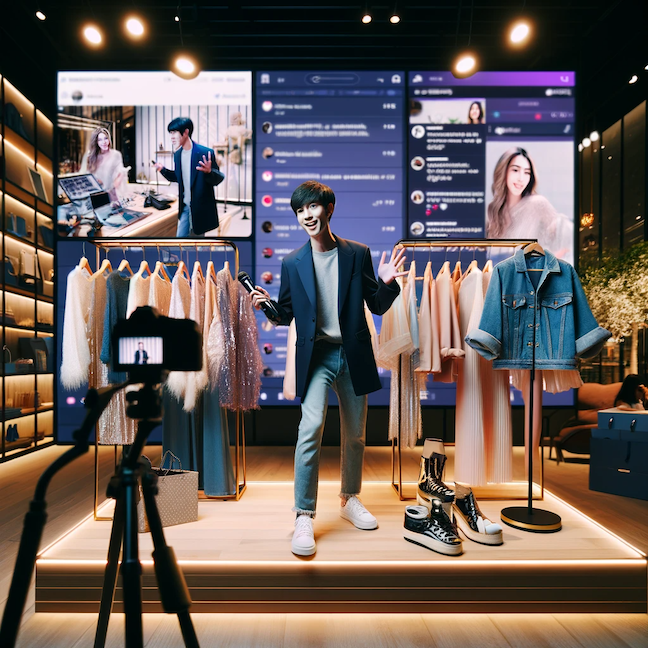
According to McKinsey, the most popular product categories for live stream shopping are apparel and fashion, beauty products, food, consumer electronics, and furnishing and home decor. For optimum live stream e-commerce shopping, they recommend starting with infrequent streams focused on 1-5 products.
They also suggest using TikTok, Instagram, Facebook or Amazon Live, and then moving on to a “dedicated in-house team or agency staff to plan and develop content for livestreams, including storylines, scripts, and hosts or micro-influencers” and broadcast them across multiple channels.
Also, because of Apple’s privacy and data update, more and more advertisers are experimenting with shoppable TV ads. Advertisers are turning to Roku’s new shoppable ad pilot, which allows viewers to buy items at Walmart from their Roku devices simply by pressing “OK” on their remote control while watching a shoppable ad.
14) Voice Search (VSEO)
Voice search optimization is becoming increasingly important as the use of digital assistants continues to rise and more people become more comfortable with using their voices to search online.
71% of searchers prefer to conduct queries using voice instead of typing.
VSEO involves optimizing your website content so it can be easily understood by digital assistants like Siri and Alexa, helping them deliver faster and more accurate search results. To remain competitive, businesses will need to ensure that their content is easily found via voice search:

Voice search already plays a crucial role in providing relevant information for search engine users. Google Assistant has 1 million actions and Alexa has over 100,000 skills, which represent functions that allow their voice assistants to react very specifically to user commands and queries:
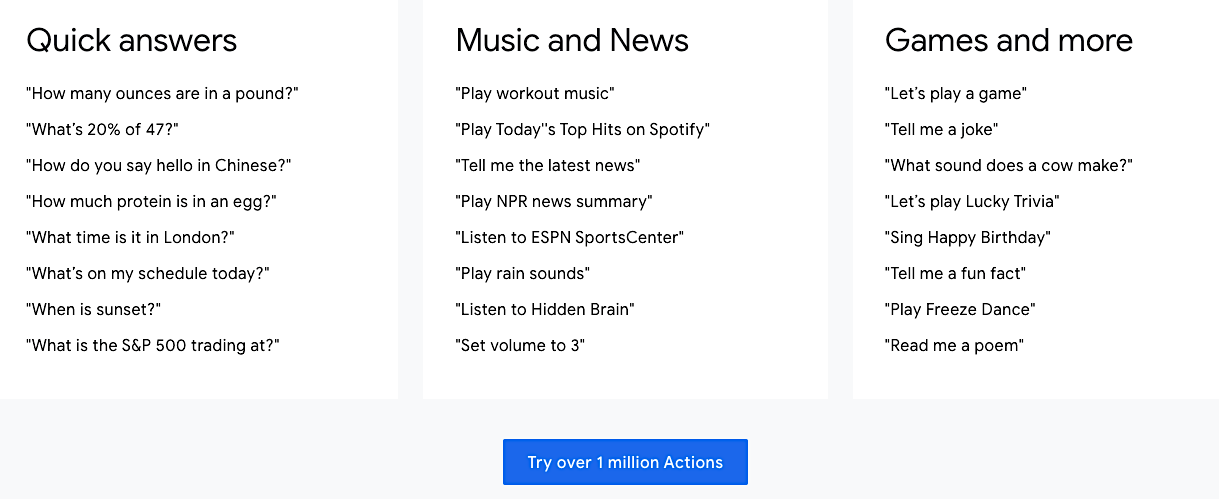
Not only will more brands produce audio content in the hopes of gaining appearing in voice search results, but ads are on their way next. This means that Alexa will tell you the answer to your question along with a “word from her sponsor.”
The latest data (which is now a few years old, so we can assume that this number is higher) shows that 27% of all searches on mobile devices are voice-activated, meaning that they come from a set of “trigger words” such as “how,” “what,” “best,” and “easy.”

The launch of voice assistants has disrupted more than the search engine world. As it turns out, consumers don’t just like to use them to execute their search queries — they also like to use them to purchase.
15) Social Media Stories
Social media stories have been gaining popularity since Snapchat first came out with Stories, and for good reason.
Stories (now available on Instagram, Facebook, YouTube, LinkedIn, and Twitter) are an effective way to engage users and drive visibility to your products or services. Stories are posts that disappear after 24 hours and offer a unique format that can be used to promote events, showcase products, announce deals, or even just tell a story.
Here are some ways you can use social media stories on Instagram, Facebook, and Snapchat to engage with your audience:
- Behind-the-Scenes Content: Share glimpses of your day-to-day operations, giving your audience a more personal and relatable view of your brand.
- Polls and Q&A Sessions: Use interactive tools like polls or Q&A stickers to gather feedback, answer questions, and engage directly with your audience.
- Limited-Time Offers and Promotions: Create urgency and exclusivity by sharing special offers or promotions available only for the duration of the Story.
- User-Generated Content: Share or feature stories from your audience, like testimonials or photos of them using your product, to build community and authenticity.
- Teasers and Previews: Use Stories to tease upcoming products, events, or announcements, building anticipation and keeping your audience engaged.
In addition, you can:
- Add Links to Your Social Media Stories: This is particularly effective on platforms like Instagram, where you can direct viewers to your website or a specific product page.
- Take Advantage of Snapchat Geofilters: Custom geofilters can enhance local engagement and brand visibility, especially for location-based marketing.
- Add Location Tags: Location tags increase the discoverability of your Stories, attracting local audiences or those interested in specific locations.
- Add Mentions for Other Brands and Your Fans: Tagging enhances engagement, fosters collaborations, and appreciates fan content.
- Give Live Video a Try When Creating Stories: Live videos can drive real-time engagement, offering an unfiltered, immediate connection with your audience.
- Invite Followers to Explore More with Clear Call-to-Actions: Encourage action, such as visiting a website, signing up, or checking out a new product, making your Stories not just engaging but also conversion-focused.
By using these social media marketing strategies, you can create an engaging, interactive, and personable experience that resonates with your audience and strengthens your brand’s presence on social media.
Dive Deeper: How to Create Instagram Stories Ads that Your Ideal Customer Will Swipe Up
16) Interactive Content & UGC
In the coming year, we’re destined to see even more of a shift from traditional text-based content to dynamic interactive content that offers users an immersive experience, such as:
- Quizzes and polls
- Embedded calculators
- Augmented reality ads
- 360-degree videos
Here’s an excellent example of a 360 VR video by National Geographic (be sure to use your mouse or finger to move the video left, right, up, down):
And here’s an example of our Marketing Impact Calculator to help you calculate how much more money you’ll make with marketing:

Interactive content belongs on this list of digital marketing trends because it is more engaging, more memorable and more likely to generate the results your business needs. People like it not just because it’s fresh and original, but because it makes them feel more connected to brands and more involved in the buying process.
And user-generated content goes hand in hand with interactive content. UGC is content that is created and shared by users on social media. It can include images, videos, reviews and blog posts about products or services.
Using UGC in your marketing strategies has numerous benefits:
- It increases brand visibility and engagement as customers share their positive experiences with the product or service to their friends and followers.
- It builds trust between the brand and its customers because user-generated content is seen as more authentic than traditional media campaigns since it comes from people who have actually tried the product or service themselves.
- It provides valuable feedback which can be used to improve customer experience and make the product or service even more appealing to potential customers.
Encouraging your audience to create and share UCG can be as easy as a customer posting their favorite Starbucks treat and tagging the company:

Or the GoPro Million Dollar Challenge, which comes out every year with GoPro’s newest camera and encourages both the purchase of the camera and the creation of quality UGC content:
Dive Deeper: 8 Ways to Encourage More User-Generated Content (UGC)
17) Blockchain Applications
As defined by Blockgeeks, a blockchain is:
“A time-stamped series of immutable data records that is managed by a cluster of computers not owned by any single entity. Each of these blocks of data (i.e., block) is secured and bound to each other using cryptographic principles (i.e., chain).”
Here’s a visual representation of how a blockchain works:

Despite being initially focused on cryptocurrencies, blockchain technologies and their applications are far more wide-reaching than just the financial world. Here are a few examples.
Integration of Artificial Intelligence (AI) with Blockchain:
- AI can enhance blockchain’s capabilities in areas like data analysis, security, and automation.
- This integration can lead to more efficient and intelligent blockchain applications.
- Marketers can leverage AI-powered blockchain solutions for targeted marketing campaigns, personalized customer experiences, and data-driven decision-making.
Blockchain as a Service (BaaS):
- BaaS provides businesses with an easy-to-use platform for developing and deploying blockchain applications.
- This lowers the barriers to entry for blockchain adoption and expands its reach to a wider range of businesses.
- Marketers can use BaaS platforms to create blockchain-powered loyalty programs, supply chain tracking systems, and secure data management solutions.
Non-Fungible Token (NFT) Boom:
- NFTs are unique digital assets that represent ownership of items like artwork, collectibles, and virtual goods.
- The NFT boom has opened up new opportunities for marketers to engage with communities, create exclusive experiences, and monetize digital content.
- Marketers can explore NFT-based campaigns, influencer marketing partnerships, and virtual merchandise to connect with tech-savvy audiences.
Growth of Decentralized Finance (DeFi):
- DeFi offers financial services like lending, borrowing, and trading without the need for traditional intermediaries.
- DeFi’s growth is democratizing access to financial services and disrupting traditional financial institutions.
- Marketers can leverage DeFi platforms for targeted financial marketing, customer acquisition, and loyalty programs.
Dive Deeper:
* The Ultimate Guide to Blockchain Digital Marketing and Cryptocurrency
* How Blockchain Can Be Instrumental in Preventing Digital Fraud
18) First-Party Cookies & Data Privacy
The European Union’s General Data Protection Regulation (GDPR) and California’s Consumer Privacy Act (CCPA) were passed into law to put limits on the way companies use their customer’s data.
Since then, dozens of the largest companies in the world have been fined exorbitant sums of money due to user privacy violations, such as:
- Amazon — $877 million
- Google – $57 million
- British Airways – $26 million
The implications of the new data privacy laws are far more reaching than economic. Marketers are now faced with a situation that has always been their biggest nightmare: the end of third-party cookies.
While it’s arguably less convenient than the use of third-party data, first-party cookies are very much the new standard of collecting user data while maintaining their privacy.
First-party cookies allow brands to collect valuable data about their customers without overstepping on any privacy boundaries. This data can be used to improve the customer experience and deliver more relevant and effective marketing campaigns.
With the end of third-party cookies — such as the ones most marketing tools used to power their technologies — companies can only rely on their own collected data.
In an effort to streamline a bloated digital advertising infrastructure and help create a new set of user privacy-focused open web standards, Google announced that it was ending support for third-party browser cookies in its Chrome browser with its Privacy Sandbox.
The data collected by these tiny scraps of code beams a huge range of information about customer preferences back to third parties, who often sell that data to a range of businesses and individuals:
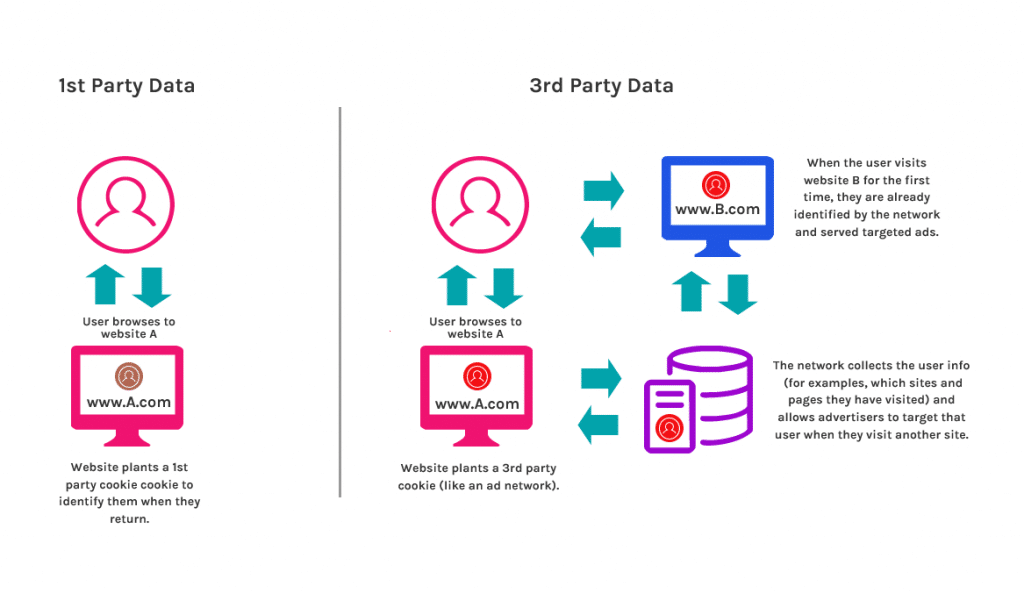
First-party cookies will force marketers to be mindful of the data they collect and how they use it.
Here are a few of the best, most current ways brands can use first-party cookies to improve data privacy in their marketing strategies:
- Personalize the website or app experience. Brands can use first-party cookies to track which pages users visit, what products they view, and what items they add to their cart. This data can be used to personalize the user experience by showing users more relevant content and product recommendations.
- Send targeted marketing messages. Brands can use first-party cookies to segment their customer base and send targeted marketing messages. For example, a brand could send an email to customers who have abandoned their shopping carts with a reminder to complete their purchase.
- Measure, measure, measure. Brands can use first-party cookies to track the performance of their marketing campaigns. For example, a brand could track how many people clicked on a link in an email or how many people made a purchase after seeing an ad.
It might feel like we’ve taken a step backward in the way we collect and leverage user data, but it’s ultimately a more ethical means of delivering your brand’s messaging to your audience in a way that they will be more receptive to.
Dive Deeper:
* Google Privacy Sandbox: What Does It Mean for the Future of Targeted Ads?
* How Apple’s iOS 14 Release May Affect Your Ads (& What to Do About It)
19) Website Security
Another digital marketing trends candidate is online security. In the same breath as privacy, website security is becoming more important than ever.
When a visitor lands on your site for the first time, they’ll make up their mind about your security within seconds. If they don’t feel safe, they won’t stick around, which leads to a lower dwell time, which is a relatively recent Google ranking factor.
That means you may see a decrease in rankings if people don’t feel safe on your website.
What’s more, with the 2023 Core Web Vitals update, websites must have secure sites. From now on, the bare minimum is to enable the HTTPS protocol for your site, which will show your visitors a little green padlock icon in the URL:

In addition, prominently displaying a security seal of trust or trust badge on your website will reassure your site visitors that you take their safety seriously:

Dive Deeper: How Poor Website Security Negatively Impacts SEO Rankings
20) Podcasts
People like listening to podcasts, whether they are from individuals or companies. One source indicates that 80% of people will listen to most of a podcast episode.
And with Google now displaying podcast episodes directly in its SERPs…

…you must put more emphasis on optimizing your podcast.
Additionally, “people are set to interact with voice-enabled devices more often, so podcasters can increase brand awareness and audience engagement with voice SEO tactics,” including:
- Choose a keyword for each podcast episode
- Create a specific page for every episode
- Create a blog post of ~300 words for each episode
However, podcasts can be tricky for marketers as listeners may not be prompted to take action, such as signing up for an email newsletter. In the next few years, marketers will take a more user-friendly approach that will prioritize:
- Using one call to action per episode
- Summarizing the episode’s key points
- Making it easy to listen to a podcast — that means not requiring a sign-up, download, or any other issues just to listen to an episode
Dive Deeper:
* The Ultimate Guide to Podcast Advertising
* 9 Podcast Trends You Can’t Ignore
* Audio SEO: The Complete Guide to Ranking Your Podcast Successfully
21) Native Advertising & Contextual Advertising
Is it a surprise to say that people hate online ads?
It shouldn’t be, considering that 31% of Americans use ad blockers to avoid ads, which forces marketers to try new acquisition channels.
Among the many options available, some of which we mentioned here, marketers have found native advertising.
Native advertising is a type of non-disruptive digital advertising in which the ad seamlessly blends in with the design of the web page it is published on. Consumers usually can’t distinguish native ads from the digital content in which they show up — hence the name “native”:

An AppNexus study found that native ads see an average CTR of 0.80%, while display ads see 0.09% — that’s 8.80x higher than display ads:

Contextual advertising is another type of digital marketing trend that places ads next to relevant content. This is in contrast to behavioral targeting, which tracks users’ online activity and shows them ads based on their browsing history and interests.
Contextual advertising is becoming increasingly popular as a way to reach consumers with relevant ads without invading their privacy. In particular, it is poised to become the next big thing in marketing for the following reasons:
- It is more effective. Studies have shown that contextual ads are more likely to be clicked on and remembered than behavioral ads. This is because they are more relevant to the content that consumers are already viewing.
- It is more privacy-friendly. Contextual advertising does not require marketers to track users’ online activity. Instead, it relies on the content of the page that the user is viewing to determine which ads to show. This makes it a more privacy-friendly alternative to behavioral targeting.
- It is more scalable. Contextual advertising can be used to reach a wide audience across a variety of platforms. This is because it is not limited to specific websites or apps.
Dive Deeper: How to Scale Your E-commerce Traffic Acquisition with Native Advertising
22) IoT Advertising
The “Internet of the Things” (IoT) has been making a lot of noise over the last decade. To understand its place in this digital marketing trends list, let’s quickly define it:
The IoT represents a network of devices, from smart cars to household appliances to wearable tech, that are connected between each other and the Internet. In this network, the connected devices can gather, share and analyze information and create actions synchronously.
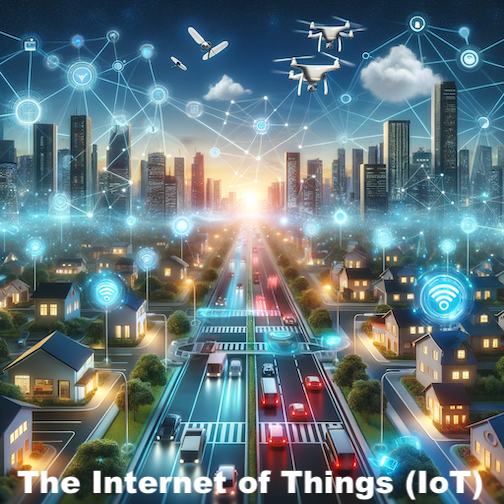
A few examples of IoT are:
- Controlling a home thermostat remotely using a mobile app
- DHL tracking vehicles and monitoring warehouses using environmental sensors to optimize their processes
- A smart toothbrush that encourages good brushing habits
- A health monitor that reports on a variety of biometrics and will contact your healthcare provider if needed
- A smart refrigerator that writes a grocery list
IoT advertising involves connecting digital screens to specific products and services in order to inform customers about them. This works by gathering data from sensors installed on the digital screen and then using this data to personalize advertisements for customers.
For example, Tide partnered with Amazon to leverage Amazon’s Dash buttons. Customers would attach this physical button to their dryers, and when the detergent was close to running out, the customer simply presses the button and a new pack is delivered to their home:
And, of course, Google’s local search ads make good use of IoT in advertising. When people search locally on their smartphones, they’re shown relevant ads based on their current location
Now let’s just hope that these devices don’t start to read our minds…
23) Connected TV Advertising & Self-Service Ads
Connected TV (CTV) advertising is currently one of the fastest-growing segments of the digital advertising market, and it is poised to continue its meteoric rise in the coming year.
According to eMarketer, CTV ad spend in the U.S. is expected to reach $29.29 billion by next year and within the next few years come closer to a 50-50 split between traditional TV ad spending and CTV:

One of the key drivers of CTV growth is the increasing adoption of streaming services: 85% of U.S. households now have at least one streaming subscription.
And 4% of consumers have turned over their phone number in order to get updates from an advertiser after seeing a CTV ad:
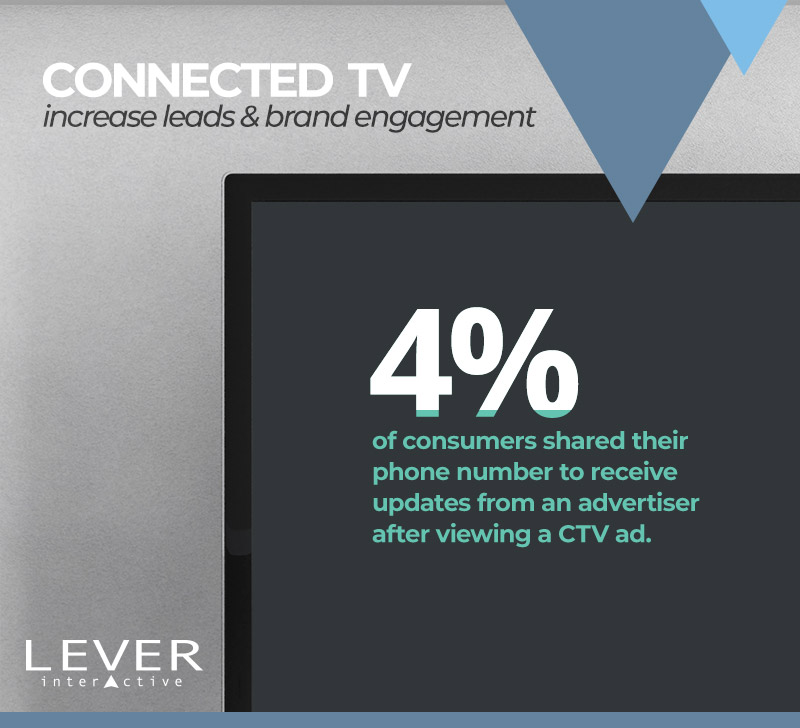
This shift away from traditional cable TV is creating a new opportunity for advertisers to reach their target audiences on the big screen.
Another key factor driving CTV growth is the rise of self-service advertising platforms. In the past, CTV advertising was only accessible to large enterprises with deep pockets. However, self-service platforms are now making it possible for businesses of all sizes to run CTV ads.
This is a major game-changer for digital marketers. Self-service platforms give businesses more control over their CTV campaigns and allow them to target their ads more precisely. They also make CTV advertising more affordable and accessible to a wider range of businesses.
Here are a few key things to look out for pertaining to CTV advertising and self-service ads:
- Access to new technologies and ad formats: Self-service platforms are constantly innovating and developing new technologies and ad formats.
- Improved targeting and measurement: Self-service platforms give digital marketers more control over their CTV campaigns and allow them to target their ads more precisely.
- Reduced costs: Self-service platforms typically offer lower ad costs than traditional CTV advertising methods.
Looking for a full-service marketing agency? Check out:
The Absolute 20 Best Marketing Agencies
Final Word on New Trends in Digital Marketing
For anyone in digital marketing, change is an integral part of the job. You must stay ahead of the game and strive to embrace new technologies, tools, and digital marketing efforts to gain an edge over your competitors.
This isn’t to say old school marketing techniques are no longer relevant, but a combination of both old and current marketing trends is a prudent strategy. Significant digital marketing trends such as Position Zero and IoT advertising can provide brands and marketers with unprecedented insights and opportunities to succeed.
By understanding and leveraging these marketing strategies today, businesses can stay ahead of their competition and be successful! Good luck!
If you want to grow more efficiently, our experts can audit your marketing and bring you fresh ideas for Paid Media, SEO, Digital Content, CRO, and more. Just click the button below to book a chat with our team!
Additional contributions by CJ Haughey, Ivan Kreimer, Sam Pak, Alex Raza, and Selena Templeton.
